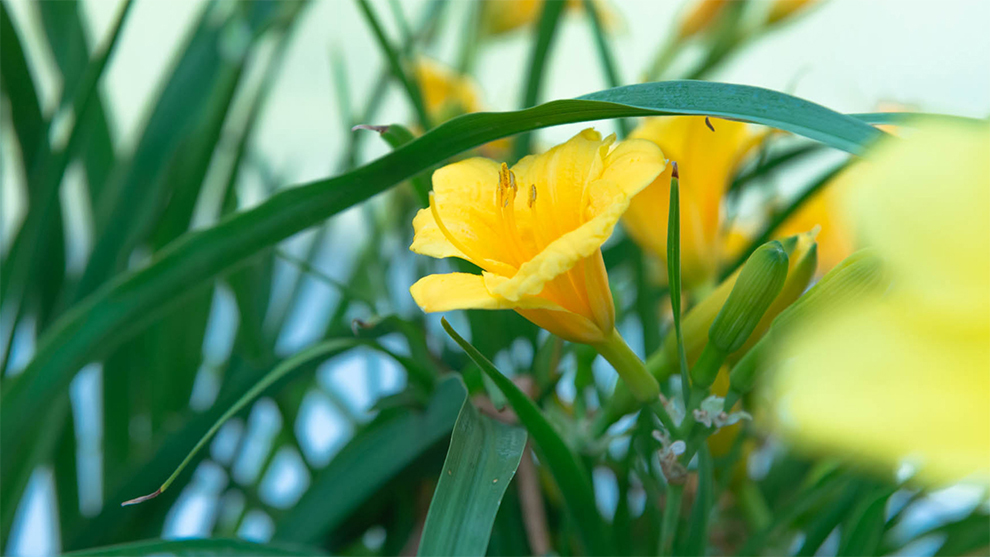Hey there, fellow garden enthusiasts! I’m so excited to share my tried-and-true tips for keeping those gorgeous daylilies blooming throughout the entire summer season. As someone who’s spent countless evenings in my garden deadheading these beauties, I can tell you it’s totally worth the effort!
Why Daylilies Are Summer Garden Superstars
These hardy perennials, Hemerocallis, are absolute powerhouses in any garden. They’re not just pretty faces; with the right care, they can keep blooming for months. Each flower only lasts a day, which is how they got their name, but a healthy plant will keep giving birth to new blooms all the time.
Essential Steps to Keep Daylilies Blooming All Summer
1. Deadheading Is Your Best Friend
The most important thing you gotta do is deadheading! Here’s my simple process
- Remove spent blooms at their base
- Cut off old flower stalks (scapes) completely
- Do this task regularly – I usually do it during my evening garden walks
- Focus on removing seed pods before they form
Pro tip When deadheading, grab the spent flower stalk at its base and make a clean cut. Don’t just yank it off – that could damage the plant!
2. Proper Planting and Location
Your daylilies need:
- 6+ hours of direct sunlight daily
- Well-draining soil
- Enough space between plants (about 18-24 inches)
- Moderate moisture levels
3. Feeding Your Daylilies
To keep the bloom show going:
- Apply balanced fertilizer in early spring
- Feed again after first bloom cycle
- Water thoroughly after fertilizing
- Avoid over-fertilizing – less is more!
Best Repeat-Blooming Varieties
I’ve had amazing success with these varieties that bloom all summer:
| Variety Name | Color | Height |
|---|---|---|
| Stella D’Oro | Golden yellow | 12-18″ |
| Happy Returns | Lemon yellow | 18″ |
| Rosy Returns | Rosy wine | 16-18″ |
| Pardon Me | Cherry red | 18″ |
| My Melinda | Peachy pink | 16-20″ |
Common Problems & Solutions
Sometimes things don’t go as planned. Here’s what to watch for:
-
Not Enough Blooms
- Cause: Insufficient sunlight
- Solution: Transplant to sunnier location
-
Weak Plants
- Cause: Poor soil nutrients
- Solution: Add compost and balanced fertilizer
-
Flower Production Stops
- Cause: Seed pod formation
- Solution: Regular deadheading
My Personal Timeline for Daylily Care
- Early Spring: Clean up dead foliage, apply fertilizer
- Late Spring: Watch for first buds
- Summer: Regular deadheading (I do this about 2-3 times per week)
- Late Summer: Continue deadheading, light fertilizing if needed
- Fall: Final cleanup, mulch for winter protection
Extra Tips for Maximum Blooms
- Keep the area around plants weed-free
- Mulch to retain moisture and suppress weeds
- Water deeply during dry spells
- Divide overcrowded clumps every 3-4 years
The Energy Conservation Secret
Here’s something cool – when you remove those spent blooms and prevent seed formation, you’re actually helping your plant redirect its energy into making more flowers instead of seeds. It’s like giving your daylilies a productivity boost!
Wrapping It Up
There’s no secret to getting daylilies to bloom all summer, but they do need regular care. I can’t stress this enough: you need to deadhead regularly. Trust me, once you get into the swing of it, it becomes a pleasure to do in the garden.
Remember, even if you miss a few days of deadheading, don’t stress too much. These plants are pretty forgiving, and you can always get back on track. Just grab your pruners and head out there during the golden hour – it’s actually quite therapeutic!
Have you tried growing repeat-blooming daylilies? What’s your favorite variety? Drop a comment below – I’d love to hear about your garden adventures!
Would you like me to explain any part of this guide in more detail?

When to plant daylilies?
To keep daylilies from dying from too much heat or cold, they can be planted in the spring or fall, when the weather is cooler. Plants in pots are usually sold in the spring and summer, while bare root plants can be bought in the early spring and early fall.
Do deer eat daylilies?
Deer will graze on daylily foliage, particularly new spring growth. They may also nibble on flowers. However, these plants are resilient to deer browse and should recover. If you live in a deer-prone area, use protection or repellent.
Daylilies form dense root clumps that will expand as plants mature. Clumps should be divided every few years for the best flowering.
How to prune Daylilies to keep them blooming all Spring and Summer!
FAQ
How do you get reblooming daylilies to rebloom?
How can I keep them blooming all season long? Remove the faded flowers to encourage repeat bloom. This allows the plant to put its energy into re-blooming instead of forming seeds. Established plants benefit from regular division.
Can you keep daylilies blooming all summer?
Yes, some daylily varieties can provide blooms throughout the summer. These are known as reblooming or everblooming daylilies.
Should daylilies be cut back after blooming?
Yes, it is generally recommended to cut back daylilies after they finish blooming.
Is Miracle-Gro good for daylilies?
Starting a month after planting, feed daylilies with Miracle-Gro® Shake ‘n Feed® Rose & Bloom Plant Food to help them continue to grow big and strong, thanks in part to natural ingredients that help feed plants above and below the soil.
